 Brazil
Brazil
Traduzir página para português
|
This chart shows the transmission rate. It remains above 1.0 so the infection is growing. 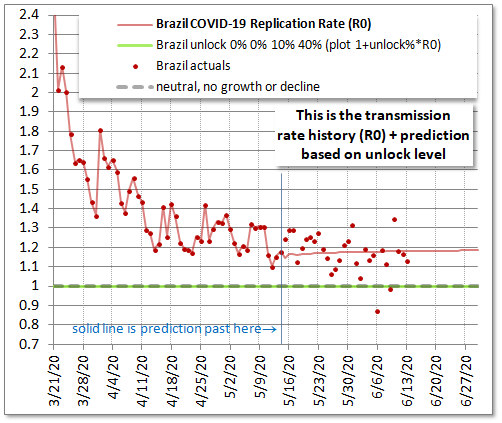 |
This
chart shows the mortality
trend. It is down at a similar rate to other countries, though it
started high and nearly doubled. It is advantageous to put off
cases. Whether the trend
continues
is uncertain. But there is room to improve by just matching other
countries. 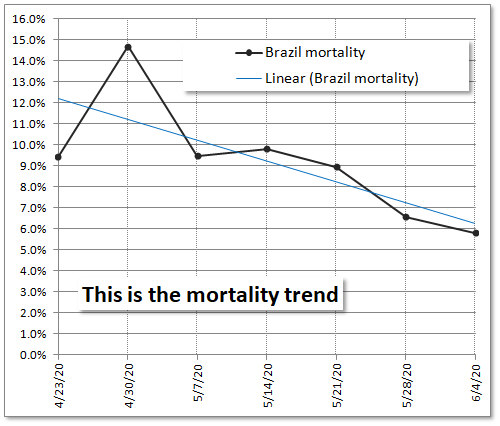 |
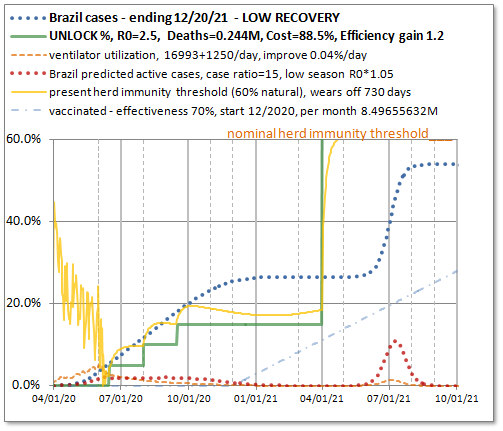
|
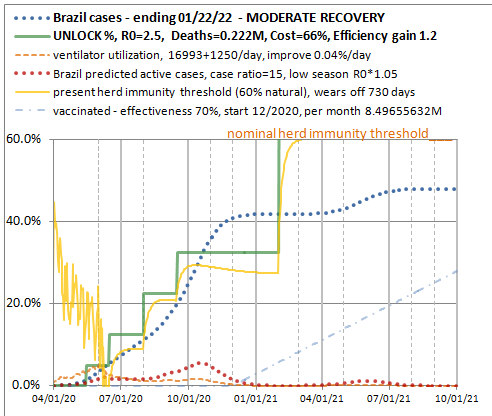
This is the moderate-recovery option. It gives a 10% improvement in deaths over the low option, and a large improvement in the economy.
Open in Dyske's online model (seasonality may not be adjusted for Southern Hemisphere) |
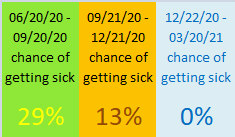 This
is the fast-recovery option and will have more people getting sick, but
also more people keeping their retirement savings, jobs and small
businesses, and everything is over at an earlier date.
Improvements and penalties change only slightly from moderate
option. The problem is it pushes deaths into the early period
when mortality is still falling. 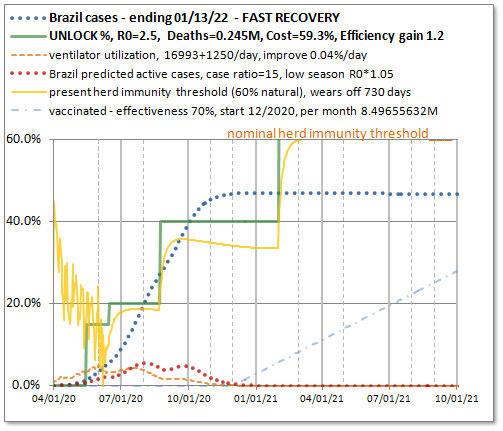
|
This chart is a comparison of economic recovery (on a scale of a percent of one year lockdown costs, green bars) and cost of the pandemic in direct deaths* (as a percent of the highest case, dark bars). No relative comparison is implied at this scale. If a person loses their retirement savings, if ten people lose their retirement savings or small businesses, how many disease deaths is that morally equivalent to? This we feel should be a persona choice, not legislated by government. 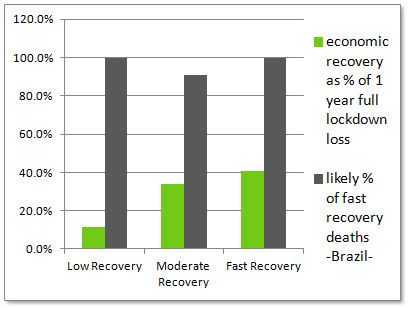 A DEFINITE INFLECTION POINT is
obvious in this chart. Deaths actually go down between low and
moderate whereas a factor of 4
or so is available in economic recovery. Assuming moderate
recovery allows most people to survive and not lose their future, it is
the reasonable choice. *
Deaths scale inverse to case
ratio. Case ratio is not well known. Calculations assume 15. |
|
SUMMARY: Part of the problem is seasonality. Brazil's seasonality is not strong, but it is reversed from the northern hemisphere, and right now is equivalent to December-February in China, Italy and the US. It
is not actually fair to compare Brazil now to low
season countries. There is no reason to consider such a tight
lockdown as the "LOW" scenario. The summer next year rebound
occurs inspite of an
aggressive vaccination schedule assumed by the model. Of course,
summer is their high season!
This is like avoiding a rebound in NY in January! (See NY) The R0 under lockdown is too high to be effective at holding cases for a vaccine. Since the "low" scenario is so bad for Brazil, choosing the moderate scenario is a no-brainer, with a 4x economic improvement over the low scenario, doing nearly as well as the fast scenario. Bolsonaro is apparently not stupid, though news media seems to want to believe that. |
(No contact information will be collected, only general regional information about where responses come from. If you want to contact us, use the contact link on the home page). |